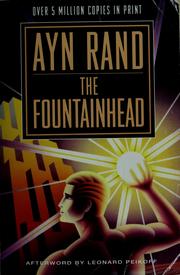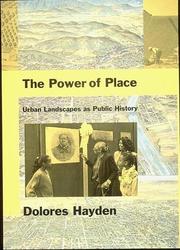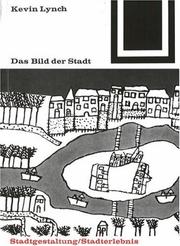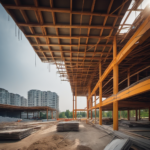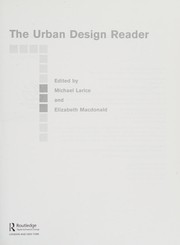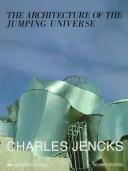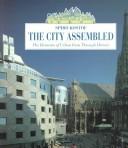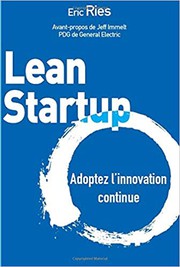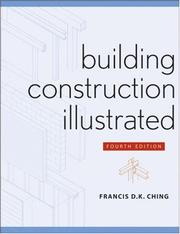Are you looking to master the art of building? Whether you’re a seasoned professional or a DIY enthusiast, the right book on building can provide you with the knowledge and inspiration to tackle any project. From construction techniques to architectural design, the world of building books is vast and varied. To help you navigate this treasure trove of knowledge, we’ve compiled a list of the 20 best books about building. Whether you’re interested in learning about sustainable construction, honing your woodworking skills, or exploring the history of architecture, there’s something for everyone on this list. Let’s dive in and discover the top building books that are sure to educate, inspire, and empower you on your building journey.
Contents
- 1 20 Best Building Books
- 2 The Death and Life of Great American Cities
- 3 The Architecture of Happiness
- 4 The Fountainhead
- 5 The Devil in the White City
- 6 The Power of Place: Urban Landscapes as Public History
- 7 The Image of the City
- 8 The Architecture of the City
- 9 The City in History: Its Origins, Its Transformations, and Its Prospects
- 10 The Language of Cities
- 11 The Architecture of Community
- 12 The City Shaped: Urban Patterns and Meanings Through History
- 13 The Eyes of the Skin: Architecture and the Senses
- 14 The Urban Design Reader
- 15 The Architecture of the Well-Tempered Environment
- 16 The City of Tomorrow: Sensors, Networks, Hackers, and the Future of Urban Life
- 17 The Architecture of the Jumping Universe: A Polemic: How Complexity Science is Changing Architecture and Culture
- 18 The City Assembled: The Elements of Urban Form Through History
- 19 The Lean Startup: How Today’s Entrepreneurs Use Continuous Innovation to Create Radically Successful Businesses
- 20 Building Construction Illustrated
- 21 The Innovator’s Dilemma: When New Technologies Cause Great Firms to Fail
- 22 Final Thoughts on Best Building Books
- 23
20 Best Building Books
The Death and Life of Great American Cities
by Jane Jacobs
The Death and Life of Great American Cities by Jane Jacobs is a groundbreaking book on urban planning and city development. Jacobs challenges traditional urban planning principles and offers a fresh perspective on how cities should be built and organized. She emphasizes the importance of diversity, mixed-use development, and the vitality of city streets. This influential book about building advocates for the creation of vibrant, bustling neighborhoods that foster a sense of community and social interaction.
Jacobs’ compelling argument against urban renewal and the destruction of historic neighborhoods has made this building book a classic in the field of urban studies. Her observations and insights continue to shape the way cities are designed and developed, making this book about building a must-read for anyone interested in the future of urban environments.
The Architecture of Happiness
by Alain de Botton
The Architecture of Happiness by Alain de Botton is a captivating exploration of the connection between architecture and our emotional well-being. This insightful book delves into the idea that the buildings and spaces we inhabit have a profound impact on our happiness and sense of fulfillment. De Botton examines how the design, style, and atmosphere of a building can influence our mood, behavior, and overall outlook on life. Through engaging prose and thought-provoking analysis, the author invites readers to consider how the aesthetics and functionality of the built environment shape our experiences and perceptions.
With a keen eye for detail and a deep appreciation for the art of architecture, De Botton provides a fresh perspective on the profound impact that buildings have on our lives. This book is a must-read for anyone interested in the intersection of psychology, aesthetics, and the built environment. Whether you’re an architecture enthusiast or simply curious about the power of design, The Architecture of Happiness offers a compelling journey into the emotional and philosophical dimensions of the built world.
The Fountainhead
by Ayn Rand
The Fountainhead is a captivating novel by Ayn Rand that delves into the world of architecture and the pursuit of individualism. At its core, the book is a thought-provoking exploration of the creative process and the struggle for artistic integrity in a world that often demands conformity. The protagonist, Howard Roark, is an uncompromising architect who refuses to conform to societal norms and instead strives to create buildings that are true to his vision and principles. As he navigates through a world that seeks to stifle his genius, Roark’s unwavering commitment to his craft and beliefs makes for a compelling and inspiring tale.
The Fountainhead is not just a book about building; it is a powerful commentary on the importance of staying true to oneself and resisting the pressures of conformity. Ayn Rand’s masterful storytelling and exploration of themes such as individualism, integrity, and the pursuit of excellence make this novel a must-read for anyone seeking to understand the complexities of the creative process and the human spirit.
The Devil in the White City
by Erik Larson
The Devil in the White City by Erik Larson is a gripping non-fiction narrative that weaves together the stories of two men during the 1893 World’s Columbian Exposition in Chicago. One man is Daniel H. Burnham, the architect behind the magnificent and awe-inspiring buildings of the fair, making this a book about building. The other man is H.H. Holmes, a charming and deceptive serial killer who used the fair as a backdrop for his gruesome crimes. This building book takes readers on a journey through the construction and planning of the fair, as well as the chilling and sinister acts of Holmes. Larson masterfully brings history to life, intertwining the excitement of the fair with the dark and disturbing reality of Holmes’ murders. The book is a mesmerizing and haunting tale of ambition, achievement, and evil, capturing the essence of Chicago and the World’s Fair while delving into the mind of a notorious killer.
The Power of Place: Urban Landscapes as Public History
by Dolores Hayden
The Power of Place: Urban Landscapes as Public History by Dolores Hayden is a captivating book about building and the way in which urban landscapes shape our collective memory and public history. Hayden delves into the significance of architecture, streets, and neighborhoods in preserving and reflecting the history and culture of a community.
The book explores how cities are not just physical structures, but also repositories of stories and memories. Hayden argues that understanding the history of a place is essential for creating a sense of belonging and identity among its inhabitants. Through vivid examples and engaging narratives, she demonstrates how urban landscapes can be used as a tool for public history, allowing communities to reclaim their past and shape their future.
Hayden’s book on building is a thought-provoking and insightful exploration of the ways in which architecture and urban planning are intertwined with public memory and identity. It is a must-read for anyone interested in the role of building in shaping the history and culture of a community.
The Image of the City
by Kevin Lynch
The Image of the City by Kevin Lynch is a classic book about urban design that explores the way people perceive and navigate through cities. Lynch delves into the elements that make up a city, such as paths, edges, districts, nodes, and landmarks, and how these elements contribute to the overall image of the city. Through extensive research and case studies, Lynch examines how individuals form mental maps of their surroundings and how these maps influence their experience of the urban environment.
This building book is essential reading for urban planners, architects, and anyone interested in understanding the intricacies of city design. Lynch’s insights continue to be relevant today, offering valuable lessons for creating cities that are not only functional but also aesthetically pleasing and conducive to human well-being. The Image of the City is a thought-provoking and influential work that has had a lasting impact on the field of urban design.
The Architecture of the City
by Aldo Rossi
The Architecture of the City, penned by Aldo Rossi, is a seminal book about building that delves into the intricate relationship between architecture and the urban environment. Through a thought-provoking exploration of the city as a constructed entity, Rossi offers a captivating insight into the building book that is the city itself. The author delves into the historical, social, and cultural dimensions of urban architecture, providing a comprehensive understanding of how cities are shaped and how they, in turn, shape human experiences.
Rossi’s compelling exploration of the book on building is a must-read for anyone interested in the intricate dynamics of urban spaces and the significance of architecture in defining the essence of a city. With a blend of theoretical insights and practical examples, this book offers a captivating journey through the complexities of urban building and the profound impact it has on our lives.
The City in History: Its Origins, Its Transformations, and Its Prospects
by Lewis Mumford
The City in History: Its Origins, Its Transformations, and Its Prospects by Lewis Mumford is a seminal book on urban development. Mumford takes readers on a journey through time, exploring the origins of cities, their evolution, and the potential futures they hold. From ancient civilizations to modern metropolises, Mumford delves into the social, cultural, and architectural aspects of cities, offering a comprehensive look at the construction of urban spaces.
Through detailed analysis and engaging storytelling, Mumford paints a vivid picture of how cities have shaped human civilization and how they continue to be influential in our lives today. The building book provides a thought-provoking examination of the relationship between people and their urban environments, offering insights into the challenges and opportunities that come with urban development. Whether you’re an urban planner, architect, historian, or simply curious about the evolution of cities, this book is a must-read for anyone interested in the development of urban spaces.
The Language of Cities
by Deyan Sudjic
The Language of Cities by Deyan Sudjic is a captivating exploration of the urban landscape and the ways in which cities are designed, experienced, and understood. Sudjic, a renowned architectural critic, delves into the complex and multifaceted world of urban planning, offering a thought-provoking analysis of the structures, spaces, and systems that shape our urban environments. This book on building is a compelling narrative that examines the historical, cultural, and social dimensions of cities, shedding light on the intricate language of architecture and urban design. Sudjic’s insightful observations and engaging storytelling make this book about building a must-read for anyone interested in the dynamic relationship between people and their built environment. Whether you are an architecture enthusiast, an urban planner, or simply a curious observer of the urban landscape, The Language of Cities offers a fascinating journey into the heart of our cities.
The Architecture of Community
by Leon Krier
The Architecture of Community by Leon Krier is a captivating book on building and urban design that challenges the conventional approach to architecture. Krier presents a thought-provoking argument for a return to traditional building methods and community-oriented design. Through a series of essays and illustrations, he explores the impact of modernism on our cities and the importance of creating spaces that foster a sense of community and belonging. Krier’s vision for architecture emphasizes the importance of human scale, pedestrian-friendly environments, and the integration of public spaces. This building book advocates for a shift away from the sterile, uniform structures that dominate many urban landscapes, and towards a more harmonious and sustainable approach to building. Krier’s insights and ideas are sure to inspire architects, urban planners, and anyone interested in the future of our built environment. The Architecture of Community is a must-read for anyone passionate about creating vibrant and livable cities.
The City Shaped: Urban Patterns and Meanings Through History
by Spiro Kostof
The City Shaped: Urban Patterns and Meanings Through History by Spiro Kostof is a captivating exploration of the evolution of cities and urban environments throughout history. This insightful book about building delves into the intricate patterns and meanings behind the development of cities, examining how they have been shaped by cultural, social, and economic forces. Kostof takes readers on a fascinating journey through time, unraveling the complexities of urban design, architecture, and the ways in which cities have been influenced by human behavior and societal needs.
From ancient civilizations to modern metropolises, Kostof provides a comprehensive analysis of the building book, offering valuable insights into the factors that have contributed to the formation of urban landscapes. With rich historical context and engaging narratives, this book is a must-read for anyone interested in understanding the profound impact of human civilization on the built environment.
The Eyes of the Skin: Architecture and the Senses
by Juhani Pallasmaa
The Eyes of the Skin: Architecture and the Senses by Juhani Pallasmaa is a groundbreaking book on building that challenges the way we perceive and experience architecture. Pallasmaa argues that our modern society relies too heavily on visual stimulation, neglecting the other senses and diminishing the richness of our built environment. He advocates for a more holistic approach to architecture, one that engages all of our senses and creates a deeper, more meaningful connection with the spaces we inhabit.
Through insightful analysis and thought-provoking examples, Pallasmaa delves into the emotional and psychological impact of architectural design, highlighting the importance of touch, sound, and even smell in shaping our experiences of a space. This building book encourages architects, designers, and anyone interested in the built environment to reconsider their approach and prioritize the human experience above all else. The Eyes of the Skin is a must-read for anyone seeking a deeper understanding of the profound relationship between architecture and the senses.
The Urban Design Reader
by Michael Larice and Elizabeth Macdonald
The Urban Design Reader by Michael Larice and Elizabeth Macdonald is a comprehensive anthology that delves into the multifaceted world of urban design. This book is an essential resource for anyone interested in the field of urban development and city planning. The collection of essays, articles, and case studies offers a diverse and insightful exploration of the various aspects of urban design, from historical perspectives to contemporary approaches.
With contributions from leading scholars and practitioners, The Urban Design Reader covers a wide range of topics, including the social, environmental, and economic implications of urban design. Readers will gain a deep understanding of the interconnectedness of urban spaces and how thoughtful design can shape the way people interact with their environment.
Whether you’re a student, professional, or simply curious about the built environment, this book about building provides a rich tapestry of perspectives and ideas that will inspire and inform your understanding of urban design.
The Architecture of the Well-Tempered Environment
by Reyner Banham
The Architecture of the Well-Tempered Environment by Reyner Banham is a fascinating book about the intricate relationship between architecture and the environment. This groundbreaking book on building explores the ways in which architects have historically adapted their designs to respond to the natural and man-made elements that surround them. Banham delves into the history of building techniques and the evolution of environmental control systems, from ancient civilizations to modern times.
With a keen eye for detail and a deep understanding of the principles of architecture, Banham presents a compelling argument for the importance of considering the environment in the design and construction of buildings. He examines the ways in which architects have harnessed technology and innovation to create spaces that are not only functional and aesthetically pleasing, but also sustainable and responsive to the needs of their inhabitants.
Whether you’re an architect, an environmentalist, or simply a curious reader with an interest in the built environment, this building book offers a thought-provoking exploration of the intersection between architecture and nature. It’s a must-read for anyone seeking to gain a deeper understanding of how our built environment shapes and is shaped by the world around us.
The City of Tomorrow: Sensors, Networks, Hackers, and the Future of Urban Life
by Carlo Ratti and Matthew Claudel
The City of Tomorrow: Sensors, Networks, Hackers, and the Future of Urban Life is a fascinating exploration of the intersection between technology and urban development. In this innovative book on building, authors Carlo Ratti and Matthew Claudel delve into the ways in which sensors, networks, and hackers are reshaping the future of our cities. They discuss how the integration of these elements is transforming the way our cities are designed, built, and experienced.
Ratti and Claudel offer a thought-provoking look at the potential impact of these advancements on urban life, from transportation and infrastructure to public spaces and social interactions. They also examine the role of citizens in shaping the future of their cities, highlighting the opportunities for collaboration and innovation.
With its compelling insights and engaging writing style, this book about building is a must-read for anyone interested in the future of urban development and the ways in which technology is shaping our cities.
The Architecture of the Jumping Universe: A Polemic: How Complexity Science is Changing Architecture and Culture
by Charles Jencks
The Architecture of the Jumping Universe: A Polemic by Charles Jencks is a thought-provoking book about the impact of complexity science on architecture and culture. In this groundbreaking work, Jencks explores how the principles of complexity science are revolutionizing the way we think about and design buildings.
As a renowned architectural critic and historian, Jencks argues that the traditional way of building is being transformed by the insights of complexity science, leading to a new era of innovative and dynamic architectural designs. He delves into the connections between architecture, nature, and the universe, offering a fresh perspective on how buildings can embody the complex and interconnected nature of our world.
Whether you’re an architect, a student of design, or simply fascinated by the intersection of science and culture, this book will challenge your preconceptions and inspire you to rethink the possibilities of the built environment. The Architecture of the Jumping Universe is a must-read for anyone interested in the future of building and the evolving role of architecture in our rapidly changing world.
The City Assembled: The Elements of Urban Form Through History
by Spiro Kostof and Greg Castillo
The City Assembled: The Elements of Urban Form Through History, co-authored by Spiro Kostof and Greg Castillo, is a captivating book about building that delves into the evolution of urban form over time. Through detailed analysis and insightful commentary, the authors explore the key elements that have shaped cities from ancient times to the present day.
Readers will be taken on a fascinating journey through history, gaining a deeper understanding of how urban landscapes have been influenced by factors such as culture, technology, and social dynamics. The book offers a rich tapestry of architectural and urban design, providing a comprehensive look at the development of cities and their building blocks.
Whether you’re an architecture enthusiast, urban planner, or simply curious about the history of cities, The City Assembled is a must-read. It offers a thought-provoking exploration of the intricate relationship between people and the environments they inhabit, making it a valuable addition to any library.
The Lean Startup: How Today’s Entrepreneurs Use Continuous Innovation to Create Radically Successful Businesses
by Eric Ries
The Lean Startup: How Today’s Entrepreneurs Use Continuous Innovation to Create Radically Successful Businesses by Eric Ries is a groundbreaking book about building and growing a successful business in today’s fast-paced world. Ries introduces the concept of the “lean startup,” which emphasizes the importance of continuous innovation and rapid iteration to create a sustainable and successful business model. Through real-life examples and practical advice, Ries demonstrates how entrepreneurs can use lean principles to test their ideas, measure progress, and make data-driven decisions to build a thriving business. Whether you’re a seasoned entrepreneur or a first-time business owner, this book about building offers invaluable insights on how to navigate the uncertainties of the modern business landscape and achieve sustainable growth. The Lean Startup is a must-read for anyone looking to create a successful and resilient business in today’s competitive market.
Building Construction Illustrated
by Francis D. K. Ching
Building Construction Illustrated by Francis D. K. Ching is a comprehensive and visually stunning book about construction. This renowned book on building provides a detailed overview of the fundamental principles and practices of building construction. With its clear and concise illustrations, it offers a unique visual approach to understanding the complexities of building design and construction.
Ching’s book about building covers a wide range of topics, including materials, construction systems, and structural design, making it an essential resource for architects, engineers, and students in the field of construction. The book is filled with detailed drawings and diagrams that help readers grasp the intricacies of construction techniques and building systems.
Whether you are a professional in the construction industry or someone with a keen interest in architecture and building design, Building Construction Illustrated is a valuable and informative resource that will enhance your understanding of the built environment. This building book is a must-read for anyone seeking a comprehensive guide to the principles and practices of construction.
The Innovator’s Dilemma: When New Technologies Cause Great Firms to Fail
by Clayton M. Christensen
The Innovator’s Dilemma, written by Clayton M. Christensen, is a groundbreaking book about the challenges that successful companies face when disruptive technologies emerge. Christensen explores the concept of disruptive innovation and how it can pose a threat to established businesses. The book delves into the dilemma that many companies encounter when they are hesitant to adopt new technologies for fear of cannibalizing their existing products or services. Through in-depth analysis and case studies, Christensen demonstrates how companies can become victims of their own success by being too focused on sustaining their current business models, rather than adapting to the changing market.
This thought-provoking book on building companies offers valuable insights into how businesses can navigate the challenges of innovation and remain competitive in a rapidly evolving landscape. It serves as a wake-up call for leaders to recognize the importance of embracing disruptive technologies and adapting their strategies to avoid the pitfalls of complacency. The Innovator’s Dilemma is a must-read for anyone seeking to understand the dynamics of innovation and the critical decisions that can shape the future of a company.
Final Thoughts on Best Building Books
Building is an essential aspect of human civilization, and these 20 best books about building provide valuable insights and knowledge for anyone interested in construction, architecture, and design. Whether you’re a professional in the field or simply passionate about creating and constructing, these books offer a wealth of inspiration and practical advice. From technical guides to awe-inspiring architectural wonders, the diverse selection of books on this list is sure to satisfy your curiosity and fuel your passion for building.
Which book about Building is best?
The best book on Building can vary with personal preference, but three widely recommended titles are:
- The Death and Life of Great American Cities by Jane Jacobs,
- The Architecture of Happiness by Alain de Botton,
- The Fountainhead by Ayn Rand.
Each offers valuable insights and could be a great starting point.
What are the best books to learn about Building?
For those looking to learn about Building, there is a wealth of literature that can provide a comprehensive understanding of the subject. Some of the most highly recommended books include:
- The Death and Life of Great American Cities by Jane Jacobs,
- The Architecture of Happiness by Alain de Botton,
- The Fountainhead by Ayn Rand,
- The Devil in the White City by Erik Larson,
- The Power of Place: Urban Landscapes as Public History by Dolores Hayden,
- The Image of the City by Kevin Lynch,
- The Architecture of the City by Aldo Rossi,
- The City in History: Its Origins, Its Transformations, and Its Prospects by Lewis Mumford,
- The Language of Cities by Deyan Sudjic,
- The Architecture of Community by Leon Krier
These books offer a range of perspectives on Building, covering various aspects and approaches to the subject.
What are the best books about Building?
The best books about Building are:
- The Death and Life of Great American Cities by Jane Jacobs,
- The Architecture of Happiness by Alain de Botton,
- The City Shaped: Urban Patterns and Meanings Through History by Spiro Kostof,
- The Eyes of the Skin: Architecture and the Senses by Juhani Pallasmaa,
- The City in History: Its Origins, Its Transformations, and Its Prospects by Lewis Mumford,
- The Image of the City by Kevin Lynch.
Each offers unique insights into the subject. While these books about Building are highly regarded, it’s important to note that any list of ‘best’ books is subjective and reflects a range of opinions.
What are the best Building books of all time?
Choosing the best Building books of all time can vary depending on who you ask, but five titles that are often celebrated include
- The Death and Life of Great American Cities by Jane Jacobs,
- The Architecture of Happiness by Alain de Botton,
- The Power of Place: Urban Landscapes as Public History by Dolores Hayden,
- The City in History: Its Origins, Its Transformations, and Its Prospects by Lewis Mumford,
- and The City Shaped: Urban Patterns and Meanings Through History by Spiro Kostof.
Each of these books has made a significant impact in the field of Building and continues to be influential today.



